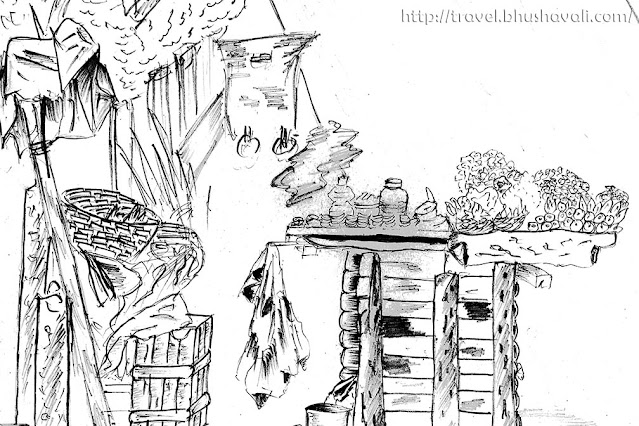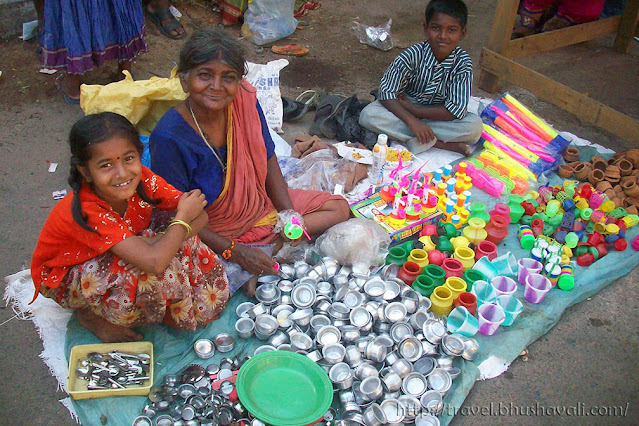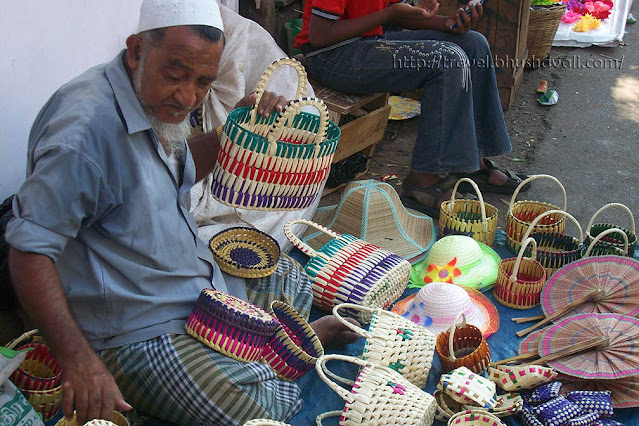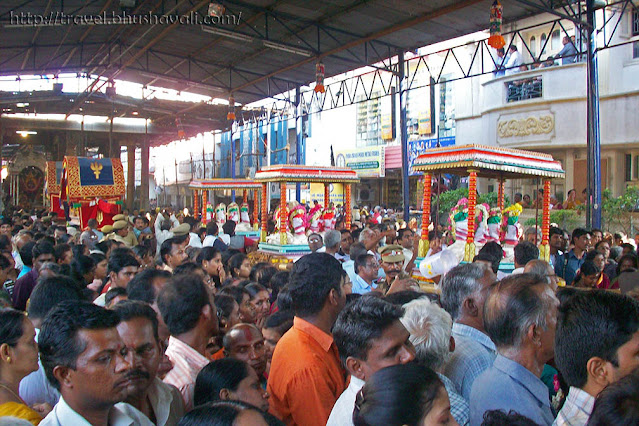ULTIMATE GUIDE TO VISITING MYLAPORE KAPALEESWARAR TEMPLE
Few years back I did a college project of mine in Mylapore Kapaleeshwarar Koil. It turned out to be one of my favorite projects, till date. It is one of the most famous temples in Chennai and one of the top places to see in Chennai.
It was fun to do that project. A whole month I almost lived in that temple. Every day morning till evening, I would be in that temple, including some time in the ‘Nadai mooduthal’ (noon) period. And also in all the Maadaveedhi (the 4 streets that surround the temple). It was strange, yet after a couple of days I got very much used to be surrounded by people who peep into my sketch book.
Ok… Surprise, this blogpost about Kapaleeswarar Temple would have only those sketches I did there and not the photographs as I usually put up. These are the Kapaleeswarar Temple images from my own sketchbook! This project was so well loved by my faculties and was as a reference for my juniors too.
Now, how did this place got to known as Mylapore? The legend connected with the temple goes thus: Once in Mount Kailash where lord Siva was giving Gyananopadesam (Holy teaching) about the Poonool (sacred thread) to goddess Parvathi / Umadevi. She was distracted by the beauty of a peacock, dancing beside. Lord got angry and cursed her to be born as a Mayil (peocock). When she pleaded for pardon, Siva said he would join her when Peacock worshipped a sivalingam. After a long period penance, the peacock found a sivalingam under a punnai tree and worshipped the lord offering flowers it carried in its beak. The lord appeared before her and divine couple reunited.
Another story goes that, there were many peacocks here and this place was an Eden filled with the joyous sound of peacocks. Peacock is ‘Mayil’ in tamil and joyous screams is called ‘Aarparithal’, and place is ‘Oor’. Hence it’s Mayil+aarparithal+oor - Mylapore.
The Lord Shiva here is called Kapaleeshwarar. Wondering why is it so.? Legend says that Lord Shiva plucked one of the 5 heads of Brahma in his anger. So Shiva was cursed with Bramhahathi Dhosham and the skull stuck to his palm. This curse was gotten rid off, after Shiva used that skull as an ascetic vessel and took alms. Skull is Kapalam in Tamil and hence the Siva here is called Kapaleeshwara. Another version for the meaning of name as follows: at Pralaya (dissolution of the cosmos) Siva alone exists and none with him. With ascetics bowl of a skull (kapalam) in his hand and he starts creation again out of his grace. So Kapaleeshwarar. Anyways, we Chennai-ities love to call him Kapali, Kabali, Kapaleeshwarar, Kabaleeshwarar, Kapaleeshwar & more......
The name of Goddess Karpagambal means that she grants all the wishes of her devotees just as the celestial tree – Karpaga Vrusksham, which grants everything asked for in heaven.
The original location of the 8th Century Pallava temple was where the Santhome Basilica stands today, along the east coast. The present location is 1 km to the west of the original location. The original sea shore Kapaleshwara temple is said to have been destructed in 1561. The new temple at its present site, about one km to the west, was built about three hundred years ago. Till date epitaphs dating back to 1250 A.D are found by archeologists near Santhome Basilica.
The main entrance is the Eastern entrance, and the look of the 125feet tall Raja Gopuram itself awe inspired me. And as I entered I came face to face with “Naradhana Ganapathy” – an unusual dancing posture of Ganapathy/Vinayakar. After praying him, I took a circum-ambulation in clockwise direction as it is usually done. Next to Ganapathy I worshipped Annanalaiyar Unnamulai Ammai Shrine. To the left is the Goshala and Anna Danam hall. As I proceeded, I reached the Mandapam.
To the left of the Mandapam are the shrines of Palani Andavar & Vayilar Nayanar. I gained a straight view of the Navarathri Mandapam where kolu is kept during Navarathri. As my Circum-ambulation proceeded I worshipped, “Singaravelar”. Again on proceeding I reach the Western Gopuram of the temple. I had a view of the dwaja sthamb, palipeetam and the Nandi Vahana of Shiva.
Then I entered the Sanctum Sancturum of Kapaleeshwarar. Lord Shiva here is in a Lingam form like in all other South Indian Shiva temples. I had a hearty prayer to make my project be a successful one and then I circum-ambulated his sanctum sanctorum. In the circum-ambulation passage the moorthi’s (statues) of Singaravelar, Natarajar, Arupethumoovar – 63 saints, Durga Lakshmi, Saraswathi, Veera Badhar, Nalvar, Annamalayar, Dakshinamoorthy, Selva Ganapathy and Somaskandha are present. Finally I took a deep look of Him and came out of the shrine.
Then I entered the Sanctum Sanctorium of Karpagambigai. Worshipping her I circumambulated her shrine. Only the palliyarai (restroom) of Kapaleeshwarar Kaipagaribgai in the passage. Then I came out & precede my outer circum-ambulation. To the southern side of the western gopuram is the shrine of Arunagiri nathar & to the northern side is Poompavai.
Now moving futher again in the outer Pradakshina – circum-ambulation, is the shrine of Punnai vana nathar, where Umadevi is depicted as a peacock worshipping linga, near it is the punnai tree – the Sthala Vruksham. Its believed that circumambulating the tree makes our wishes come true. Of course, it is tied up with several wishing strings and cradles. Then the shrine of Saniswara is located. After worshipping & circumambulating his shrine, I proceeded to the shrine of Sundareswarar to the right. The Navagraha shrine is his neighbour. After circumambulating the navaragha shrine I proceeded to the Jagadeeshwara shrine and completed my pradakrishna.
Outside the Western Gopuram of the temple is the Temple tank with a neerazhi mandapam in the middle is on the western side. It is believed to have been built by Mayillai Muthaippa Mudaliar in the 16th century. The brimming tank with lotus blooms and several thousands of fishes is such a soul pleasing sight. There are a few stories regarding this tank as well. The architecture of this temple is called ‘Kshetram Sareena Presthaaram’ i.e this temple is designed like the structure of human body. That is each architectural part of the temple, denotes a human body part.
Here are some quick live-sketching I made of the people in & around Kapaleeswarar temple.
SPECIALTIES OF MYLAPORE KAPALEESWARAR TEMPLE:
There are several, several specialties when it comes to Kapaleeshwarar Koil and Mylapore itself. And there are some specialties to some shrines in this temple.
The most beautiful miracle of Mylapore related in the Periapuranam by Sekkizhar is that of bringing back to life of the girl, Poopavai by the boy saint Gnansambandar. The girl died by the bite of a serpant. The bones and ashes were brought back to life by the hymns of gnansambandar, starting “Mattina Punnayinganal….!!”. This is believed to have happened during the 7th A.D. A separate shrine has been built for Angam Poopavai. In 1921, near the Santhome Cathedral some inscriptions related to the incident were found.
Vaayilar nayanar is one of the 63 saivaite saints. He was born and brought up in Mylapore. He had Lord – Siva in the temple of his heart. His mouth was shut and didn’t sing any hymns on lord. At the same time, a Pallava king, called Pujabalan built the Kanchi Kailasanatha temple. He set a date to inaugurate the temple. Lord Shiva came in his dream and said he would be able to come on that day as he had to inaugurate the temple of heart built by the Nayanar. The king was touched by the greatness of the saint and went to meet him. Since this saint belonged to Mylapore and because of his greatness, a separate Sanctum Sanctorum is set for him.
Ayyadigal Kaadavar Kon is also one of the 63 saivaite saints, who was a king who eventually lost all interest in worldly life and became a saint. He was born in Mylapore. The Tamizh saint Thiruvalluvar was also born and lived in this very Mylapore.
Mid-May to mid-June occurs the festival of Laksha Deepa vizha or the festival of one lakh lamps. The Navarathri is special for Karpagambal. It is a nine day festival from mid – September to mid – October.
Mid-Dec to Mid-Jan, everyday is special as it is the auspicious Tamil month of Margazhi. And it is when the Kolam Festival happens about which I had posted already.
During mid-March to mid-April occurs the Brahmotsavam, a ten day mega event. Rishaba Vahana night is on the fifth day. Kapaleeshwara is on a silver Rishaba and Karpagambigai is on a Gold Rishaba. Karthikeya is on a gold peacock. 7th Day is the Rath Yatra. The Gold Rath is a master piece. A payment of Rs.100/- is required to pull the Rath during this day. 8th Day is the famous Arupathumoovar festival i.e. the day of 63 saints’ saivaite special bathing (abhishekam) of the bronze idols of 63 saints take place. The bringing back to life to poompavai is enacted. The last day is the Bikshatana festival (Idol of lord with a skull bowl in lord, as an ascetic). The whole mega-event is a feast to eyes and inner soul.
ARUPATHUMOOVAR FESTIVAL (Update Apr 2011)
Apart from the famous Kolam Festival which happens during the month of Margazhi (Mid-Dec to Mid-Jan) , I had also said about the Panguni (Mid-March to Mid-April) Brahmotsavam which is the major 10 days long celebrations happen at Kapaleeswarar Temple. 8th Day of it is the famous Arupathumoovar festival i.e. the day of 63 saints’ saivaite special bathing (abhishekam) of the bronze idols of 63 saints take place. The bringing back to life to Poompavai is enacted. Somehow due to some wrong information, I missed out the Poompavai enactment, but I caught up with the Arupathu Moovar procession this year. So here it is.
The bronze idols of the 63 saints, bought in small chariots, 4 in each, carried in palanquins by devotees on their shoulders. The crowd was maddening!!! And best part - the hospitality & security. The police personnel were deployed and it was heartening to see them on high towers with roving eyes to oversee the security of the fellow devotees. Food was available everywhere both paid and for free too!!! I had a cup of Puttu-rice (that's boiled keralite rice with sugar), then Masala Kadalai (boiled ground-nut with grated vegetables), then some fruit slices. The place had makeshift arrangements for toilets too!!! The organization & crowd-management was too good!!!!!
MYLAPORE KAPALEESWARAR TEMPLE ARUPATHUMOOVAR PROCESSION VIDEO (Update 2017)
Technically, Kapaleeswarar temple dress code doesn't exist. But don't forget that it is an active place of worship. Applicable to both men & women - please don't wear shorts or sleeveless or body-hugging clothes; also no caps, no clothing with provocative slogans. Wear modest clothing that respects the religious sentiments of the devotees seeking the blessings of Arulmigu Kapaleeswarar.
As I mentioned in the beginning, all Hindu temples, close in the noon. Its called 'nadai mooduthal'. Literally, God is treated like a human being and his rest time is allotted. Same thing at night as well. He's moved to his 'palliyarai' (bed-chamber) and sung lullabies and the temple is shut at night.
Arulmigu Kapaleeswarar temple timings are from 5:00AM to 12:30PM & 4:00PM to 9:00PM. Being a functional, living Hindu temple, there is no entry fee. Like all Hindu temples, footwear isn't allowed inside, and there are counters near the entrance to deposit footwear.
Within Chennai
From Tambaram: 23 km via Pallavaram – Guindy – Nandanam – Mandaiveli
Road ways: Bus 21 G from West Tbm, H 51 from East Tbm
Railways: MRTS Thirumailai station via Chennai Fort
From Chennai Central: 7 km via Anna Salai – Royapettah
Roadways: Bus H 51
Railways: MRTS Thirumailai station from Park Station
From Thiruvanmiyur: 7 km via Madaiveli – Adyar – Indra Nagar
Roadways: Bus M 15, H 51
Railways: MRTS Thirumailai station
Dedicated to Mr.R.S.Jayadeep, Asst. Professor, NIFT Chennai (my mentor for this project)




















It is so interesting to learn about other people's beliefs and customs. Thanks for sharing this. I hope you got good marks for this assignment. I love the sketches.
ReplyDeleteHey Diane,
ReplyDeleteNice to know you liked my sketches. I'm happy. Thanks dear...
Yes. I did get an A grade for this... :)
Forget about the details of the temple. The sketches are amazing. You seem to be a one fine sketch artist.
ReplyDeleteHey Nags,
ReplyDeleteThanks a lot... :)
I'm glad u liked the sketches. More to come in the continuation... :)
Bhusha :) *hugs hugs hugs* Your sketches are so so so damn good da... Its not so pro and not so amateurish da... Its like the sketches those get published for stories in Weekly Tamizh Magazines... I am totally in love with your blog these days :) Remember My Gift... :D
ReplyDeleteA very interesting way to describe Kapaleeshwarar Temple with the text and your beautiful sketches. Thanks for sharing!
ReplyDelete@Sowmi,
ReplyDeleteThanks sweety...
These are high speed sketches done in 3 to 4 mins, sitting, standing on the road...
Sure, I do remember ur gift... :)
@Pietro,
Hi. Thanks for ur comments. Glad u liked the sketches... :)
So interesting information! Looks so nice!
ReplyDeleteThe sketches looks good.I appreciate your effort for the project.Interesting description.
ReplyDeletelyk da shades in sketches...tat tests da patience. nice proj. place ver I hav gone ard for some time.
ReplyDelete@Phivos,
ReplyDeleteThanks a lot for the comments...
@Mojo
Thank you... Thanks a lot... :)
@Sujay,
Thanks Sujay. These are rather impatient sketches, done in 4/5 mins, sitting/standing on road. Glad u liked em...
Really nice sketches and great info! Thanks for sharing such a wonderful post!
ReplyDeleteYour sketches are beautiful. Had been to temple once. Knew this temple is very old, but I had idea about the history. Great work.
ReplyDeleteHi Kcalpesh,
ReplyDeleteThank you... :)
Hey Rajesh,
Thanks a lot... :)
Forgot to mention the elephant beach is in Andaman, Havelock Islands! :-)
ReplyDeleteFinally I found a lovely blog from India, a country I had so many memories from my visit of 10 years ago. And a country I am dying to visit again. I will definitely follow.
ReplyDeleteThis temple had been destroyed by Portuguese and converted as Church as they did in Sri Lanka. But it was rebuit by the Vijayanagara Kings who saved most of the South Indian Temples from Moghuls...
ReplyDeleteHey...U are making good sketches. Can u draw me a portrait....
ReplyDeleteHi Bhusha
ReplyDeleteThat is a wonderful post - excellent narration and great sketches.And you have covered the temple in such great detail. Felt like I was actually in the temple circumambulating. No wonder your project serves as a model for juniors.
Ram
@Kcalpesh,
ReplyDeleteOk.. Thanks for that info...
@Turquoise Diaries,
Nice to know you've visited India and you loved the visit... :) Welcome to my blog and welcome anytime to India... :)
Would love to hear your comments. Do drop[ in often... :)
@Sathish Jij,
Thats a great piece of info.. Thanks... :)
And Welcome to my blog. So happy to know you've finally found time to comment... :)
@Ram Sir,
Thank you, thank you. Thanks a lot. :) So glad to know you like this post.
hi dear,
ReplyDeletestill i didnt read ur Kapaleeshwarar Temple - Part I
but really amazing abt ur sketches......
specialy "Sanctum Sancturum of Kapaleeshwarar"
sketch done perfect with the shadow....
eppadi paa(athuva varuthu)
kalakita poo
I know you have heard this before but I am going to say it again: You are a fine artist with a great gift. I loved the sketches like everyone else did. Interesting details about the temple complex and the history behind it. I had no clue about the origin of Mylapore as a word. Now I know the story behind it! Thanks for the education as well. All the best, you've got the gift, please continue. I will keep visiting.
ReplyDeleteI made a comment don't know where that went! I wanted to say, like a lot of other people, that your sketches are fab. The write up is really good as well. I mentioned that I did not know the origin of the name Mylapore. Now I know, thanks to you! Cheers, all the best and keep writing. I'll keep visiting.
ReplyDeleteHey Rats,
ReplyDeleteThanks da... Glad u liked my sketch...
Hi Capt,
Welcome to my blog and thanks for the comments.
I am so sorry, ur first comment also did not go anywhere. I just kept my comments to pass moderation for posts that are 7 days older or more, so new visitors are not missed out when they comment in old posts.
Thanks a lot for your encouragement. Glad you liked my sketches. And happy that now u know the meaning of Mylapore.
Thanks for the wishes. Do drop in often. Would love your visits and comments.. :)
I can see why your faculties liked your project and your juniors used as reference. Really, if u had posted the photos and not the sketches the soul of this post would have been lost.
ReplyDeletebang bang bang a big thumbs up for this
@Venky,
ReplyDeleteWelcome to my blog... Thanks for dropping by and commenting...
Glad you liked my sketches and post. So happy to know that...
Do drop in often. Would love ur comments and visits... :)
Valuable information. Nice sketches. Appreciate for your painstaking work. Let your project inspire youngsters.--Daphne
ReplyDelete@Anonymous,
ReplyDeleteThank dear... :)
Thanks Sir, your pictures are great....where is the tall mandapam actually?
ReplyDeleteWas the original temple on the sea shore and set on fire by the Portuguese fellows when they came to Chennai?
It is plain stupidity that makes one destroy another's place of worship!
Hareram
@Anon,
ReplyDeleteFirst, am not a Sir, am a Mam!!!!!
The tall mandapam is for the Temple Bell. Its to the right as soon as you enter the temple.
Well, the colonisations did cause a huge damage to out heritage!!!
AUM Nama Sivaya great work very good, viewers are blessed going through.
ReplyDeleteThank you so much Mr.B.K.Menon.
ReplyDeleteGlad you liked my post...
Do drop by often...
Nice sketches, I used to try sketching long long ago... most of them were copying from the reference books to record sheets... :) Should try these kind of work sometime in life... :)Nice note on the temple as well.
ReplyDeleteThanks Ramjee!
ReplyDeleteNice to know you too have tried sketching!!! Do try again!!! :)